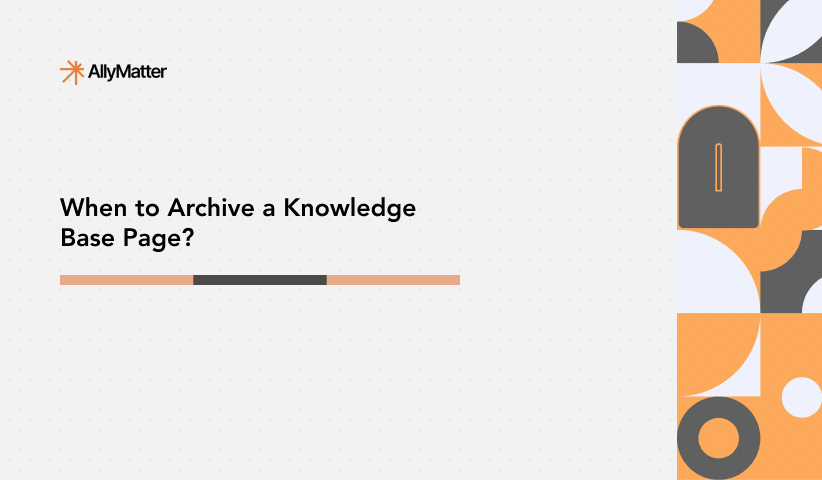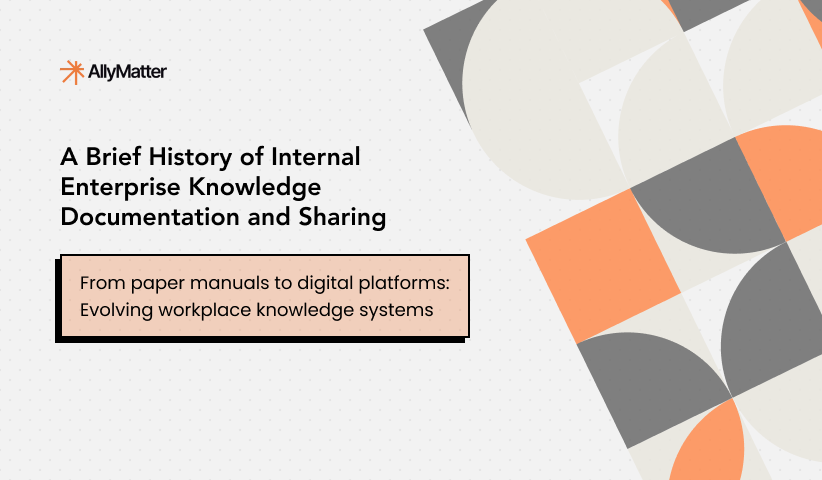Knowledge bases fail more often due to poor implementation than poor tooling. Having worked on knowledge management systems across dozens of growing companies, we’ve observed that success depends on striking the right balance between structure and flexibility during periods of rapid change.
This is particularly critical for organizations experiencing rapid growth, where tribal knowledge leaves as people depart and new processes emerge faster than they can be documented. The challenge isn’t just choosing a tool—it’s building a system that can evolve alongside your company without creating friction. Teams often struggle with systems that start off well but become bottlenecks when they’re too rigid, or devolve into information chaos when they’re too loose.
The key is understanding how various knowledge base architectures manage the natural evolution of a company’s information—from early, informal documentation to mature, structured processes. In this exploration of knowledge base tools, we’ll look at solutions suited for early-stage implementation and for rapid scaling. By comparing how each platform handles documentation, team collaboration, and information organization, we’ll help you choose a system that not only meets your current needs but also adapts to your company’s growth.
Our analysis scope
We cast a wide net when surveying knowledge base solutions, including dedicated documentation platforms and broader tools that offer knowledge base functionality. This article is part 4 of our four-part series analyzing global knowledge bases. Our core filter was straightforward: does the tool allow teams to create, organize, and share internal documentation?
This inclusive approach covered:
- Standalone knowledge base platforms
- Wiki-style tools
- Documentation features embedded in larger workplace solutions
We included specialized documentation tools as well as broader collaboration platforms, tracking everything from simple document repositories to advanced systems with workflow automation and AI capabilities. This broad perspective provides context about where each tool fits in the wider knowledge management landscape.
The resulting analysis covers everything from focused documentation tools like Slab and Outline to more comprehensive platforms like Confluence and ClickUp, which include knowledge base features as part of their broader offerings. Rather than making assumptions about what you need, we lay out what each platform offers so that you can match capabilities to your requirements.
Understanding our analysis
For each platform, we gathered key information across several dimensions to help guide your decisions:
Feature alignment
We assess the feature set of each platform to see how closely it matches core knowledge base needs. Some tools focus primarily on documentation, while others bundle knowledge base capabilities into a broader toolkit. Recognizing this helps you avoid paying for unneeded features or ending up with an overly complex solution.
Content quality support
We evaluate how each platform supports content creation and maintenance, including its editing interface, template systems, and tools for keeping documentation up to date. We also examine how well each platform organizes content—an essential factor when your documentation expands beyond basic needs.
Pricing structure
We look at base costs, per-user fees, and any significant pricing tier jumps. We pay close attention to how pricing scales and whether features like Single Sign-On (SSO) require premium tiers—often a hidden cost in many solutions.
Technical implementation
We review:
- Whether the solution is open source
- Available integrations
- Browser extension availability
- AI capabilities
- Design quality and user interface
- Sharing and collaboration features
We also provide general notes on unique features, limitations, and specific use cases where each tool shines or might fall short. Rather than making direct recommendations, we present this information so you can determine which features align with your needs and growth trajectory.
Knowledge base tools: Global list
Here’s part 4 of the list of tools that can serve as the backbone of a knowledge base in your organization.
Stonly
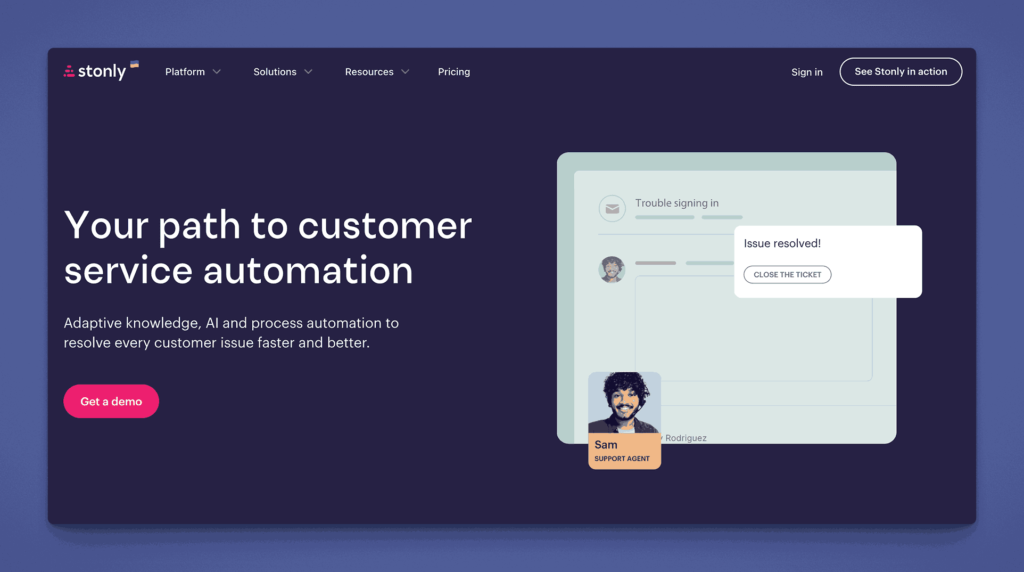
Stonly is a platform for creating interactive guides, tutorials, and step-by-step documentation. It aims to simplify user onboarding and troubleshooting, and can also serve as a knowledge base by organizing these guides into a searchable library.
Key information
- Open Source? No, Stonly is proprietary.
- Standalone KB Tool? Yes, though it specializes in interactive, step-by-step guides.
Why you might like it
- Interactive, branching guides for clear user journeys
- Embeddable widgets so you can place help content within apps or websites
- Analytics on guide completion and drop-off points
- Customization with branding and step layouts
Potential considerations
- Not a traditional text-based KB—focuses on guided experiences
- Pricing is not publicly available although they have separate plans for small businesses and enterprises
- Less suited for large sets of static documentation or policy manuals
ClickHelp
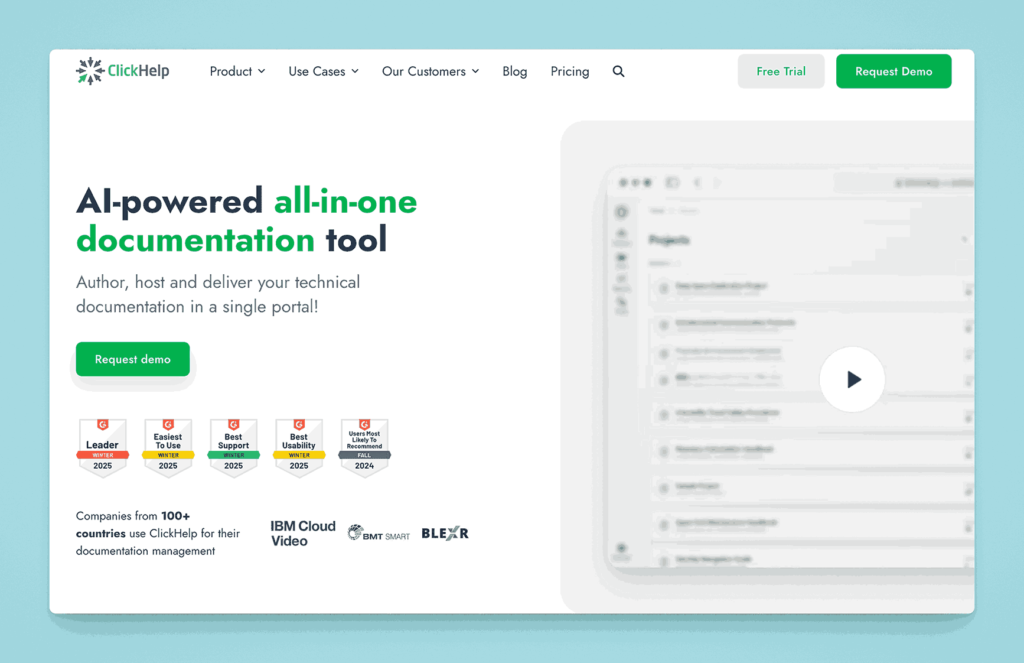
ClickHelp is a documentation platform geared toward creating technical documentation, user manuals, and online help centers. It allows multiple authors to collaborate, with features like version control, variables, conditional content, and branding options.
Key information
- Open Source? No, ClickHelp is proprietary.
- Standalone KB Tool? Yes, built specifically for software documentation and manuals.
Why you might like it
- Multi-author collaboration with review workflows
- Version control for tracking changes between documentation releases
- Conditional content and variables for creating different document variations
- Branding and customization to match your product or corporate identity
Potential considerations
- Primarily technical docs—might be overkill for simple wikis or internal knowledge sharing
- Learning curve for features like conditional text or single-sourcing
- Pricing scales with user seats and advanced authoring capabilities. Starts at $175 for starter, $285 for Growth and $580 for Professional based on 2 contributors. Per contributor charge are applied for additional contributors based on the plan chosen
HelpNDoc
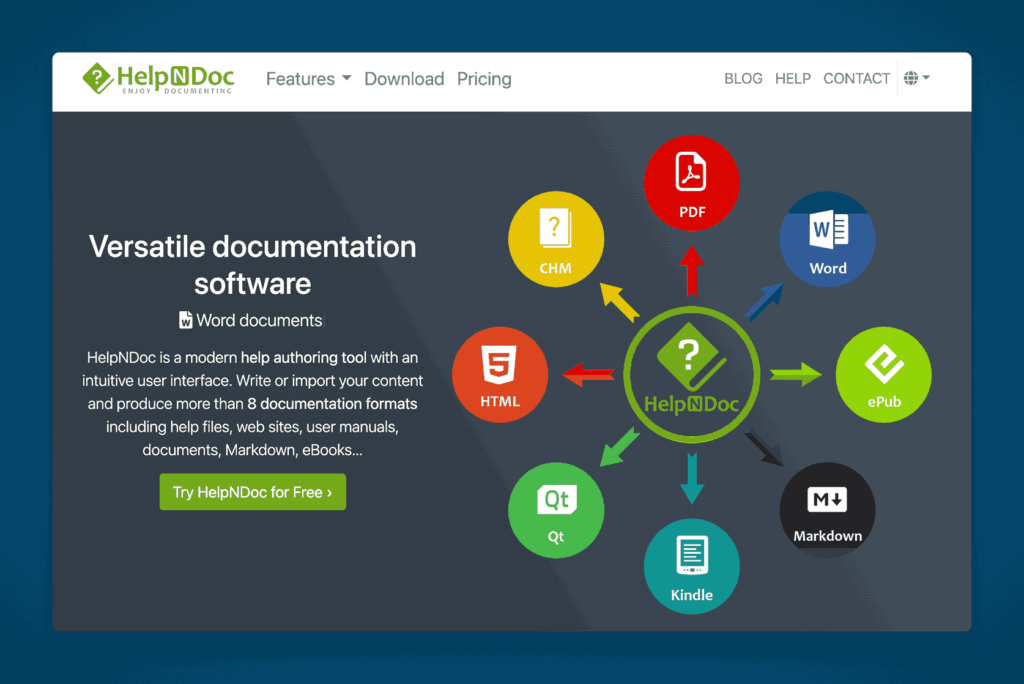
HelpNDoc is a help authoring tool (HAT) allowing teams to create CHM, HTML, PDF, and Word documentation from a single source. While it’s typically used to produce software documentation or manuals, it can double as a knowledge base solution when hosted online.
Key information
- Open Source? No, HelpNDoc is proprietary.
- Standalone KB Tool? Typically a help authoring tool, but can generate a knowledge base portal.
Why you might like it
- Single-source authoring to produce multiple output formats
- WYSIWYG editor with easy-to-use interface
- Template-based approach to keep documentation consistent
- Media library to manage images, videos, and attachments
Potential considerations
- Windows-only desktop application (for authoring)
- Lacks collaborative real-time editing—usually a solo author approach
- Not designed as a live, always-online wiki unless you host output yourself
- Pricing – Has plans for $102, $311 and $511 for the Standard, Professional and Ultimate editions. Has separate floating licenses as well.
BMC Helix Knowledge Management
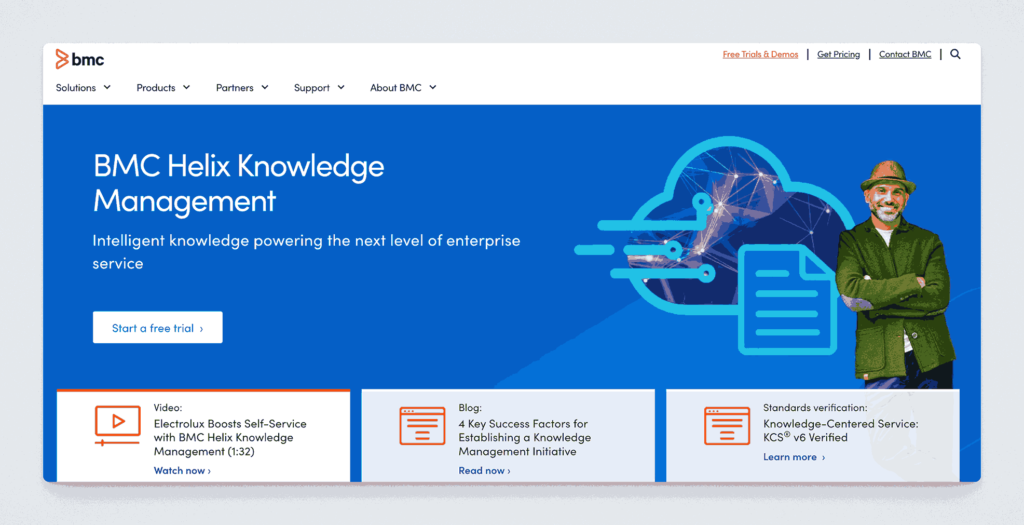
BMC Helix is an IT service management suite, and its Knowledge Management module provides an integrated KB system for resolving support tickets and sharing solutions across teams. It’s oriented toward large enterprises needing robust ITIL processes.
Key information
- Open Source? No, BMC Helix is proprietary.
- Standalone KB Tool? Part of the BMC Helix ITSM suite, but can function for knowledge management alone.
Why you might like it
- ITIL-aligned for organizations with formal ITSM processes
- Advanced workflow for article creation, review, and publishing
- Integration with incident and problem management modules
- Analytics to measure knowledge usage and resolution rates
Potential considerations
- Enterprise-level solution with corresponding costs
- Complex setup typically requiring BMC specialist knowledge
- Less suitable if you’re not running an ITSM environment
inSided by Gainsight
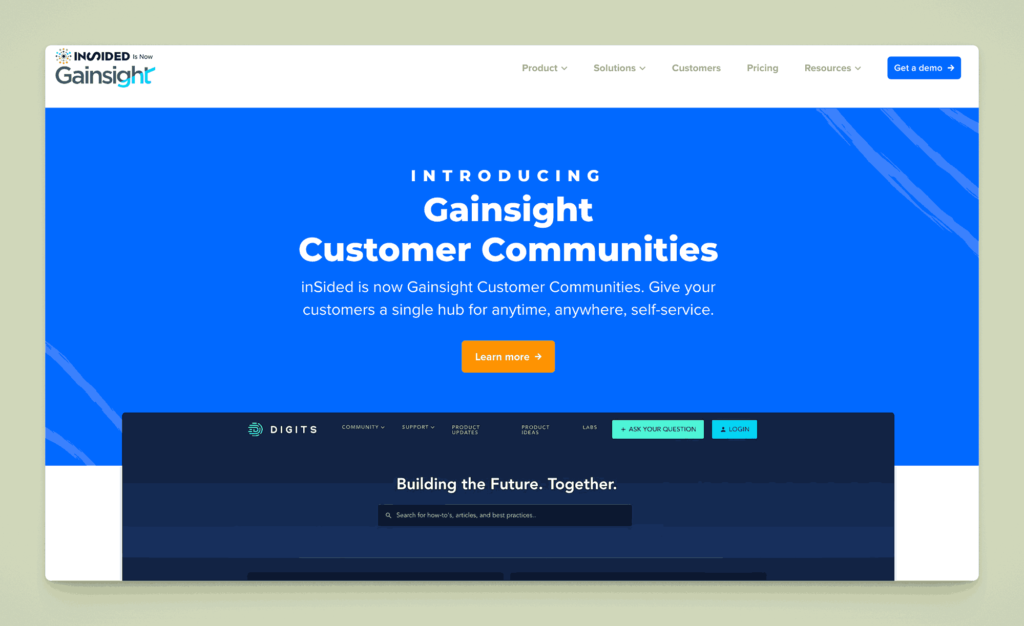
inSided by Gainsight is a community and knowledge management platform allowing companies to combine self-service support, user forums, and a knowledge base in one place. It targets SaaS and subscription businesses that want to build active user communities.
Key information
- Open Source? No, inSided is proprietary.
- Standalone KB Tool? Yes, although community forums are a core part of the solution.
Why you might like it
- Community-driven approach with user-generated knowledge
- Q&A and discussions that feed into reusable KB articles
- Integration with Gainsight’s customer success platform
- Analytics to monitor community engagement and article effectiveness
Potential considerations
- Focus on external, customer-facing communities rather than purely internal docs
- Pricing tailored for mid-to-large SaaS organizations. On request.
- Requires a strategy for community moderation and engagement
Monday.com Docs

Monday.com, known for project management, also offers Docs as part of its platform. Teams can create collaborative documents, embed boards or tasks, and link to other Monday.com items, potentially using Docs as a knowledge repository.
Key information
- Open Source? No, Monday.com is proprietary.
- Standalone KB Tool? Not purely—it’s part of Monday.com’s broader work management suite.
Why you might like it
- Unified platform for tasks, docs, and workflows
- Real-time collaboration with mentions and comments
- Easy linking to Monday.com boards, tasks, or dashboards
- Templates to standardize recurring document types
Potential considerations
- Primarily project-focused—docs might lack advanced KB features (e.g., robust search, versioning)
- Cost can escalate if you add many users or advanced features. Starts with a free version, then advanced paid plans at $9 to $19 per user per month. Enterprise plans available. That’s for the entire ecosystem though.
- Learning curve if you’re unfamiliar with the entire Monday.com ecosystem
Docsie
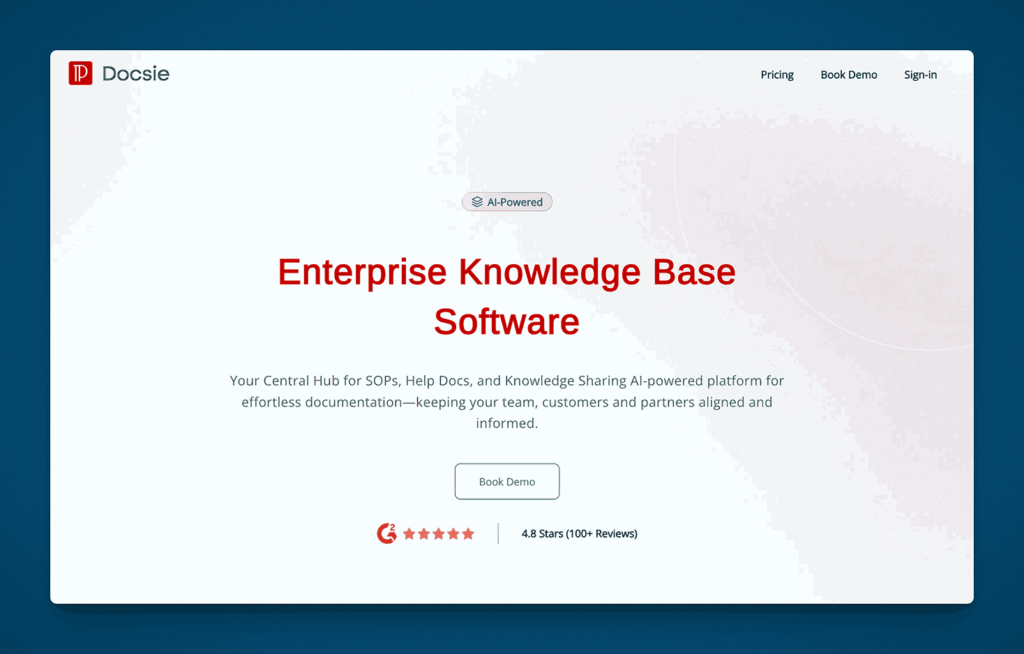
Docsie is a cloud-based documentation tool that helps teams write, manage, and publish technical or product documentation. It focuses on structured content, with collaboration features that allow multiple contributors to work on shared docs.
Key information
- Open Source? No, Docsie is proprietary.
- Standalone KB Tool? Yes, it can be used as a standalone knowledge base or help center.
Why you might like it
- Version control: Keep track of doc iterations and roll back if needed
- Collaboration: Multiple authors can edit and comment in real time
- Embedding & publishing: Easily embed docs on your website or export them
- Content reuse: Reuse snippets across multiple documents to save time
Potential considerations
- Pricing scales with the number of docs or users. Starts at $143 per month and goes up to $449 per month excluding the enterprise plan.
- Less robust than some enterprise-grade platforms if you need extensive workflow approvals
- Limited integrations compared to more established documentation suites
Shelf
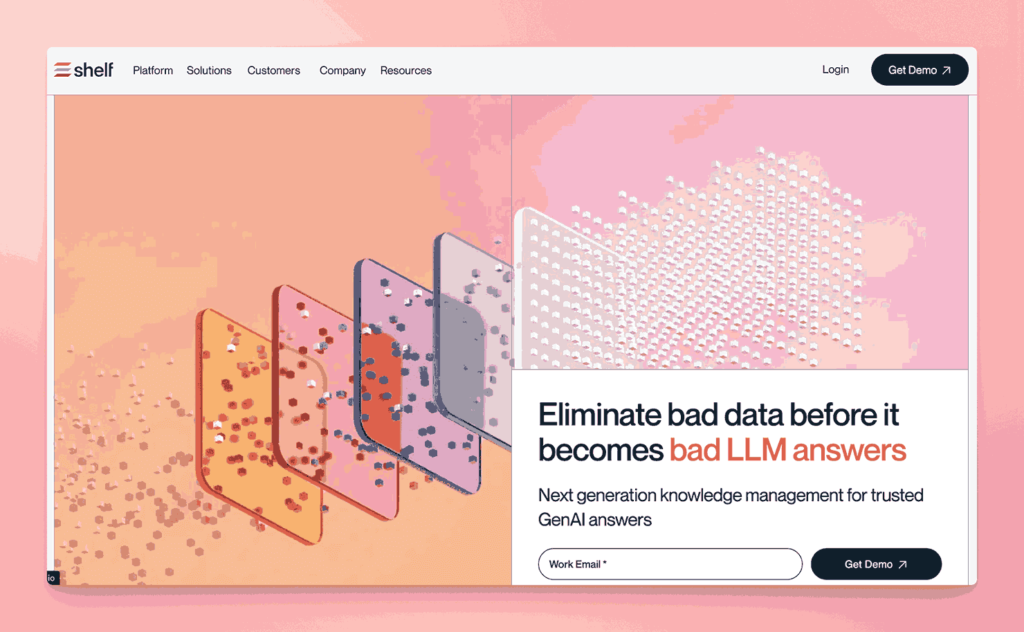
Shelf is a knowledge management platform geared toward eliminating bad data across your documentation and data sources. The way this tool perceives ‘knowledge management’ is different from the others. It offers AI-powered search, content organization, and analytics to optimize article usage.
Key information
- Open Source? No, Shelf is proprietary.
- Standalone KB Tool? Yes and No. Shelf has a centralized knowledge hub at its core though.
Why you might like it
- AI-driven search: Surfaces the most relevant documents for agents
- Automated content curation: Identifies outdated info and suggests updates
- Collaboration features: Allows team members to share feedback and improve docs
- Analytics: Track which articles are most (or least) used and measure agent performance
Potential considerations
- Focus on customer support rather than broad internal documentation
- Enterprise-level pricing can be high for smaller organizations although pricing is not publicly available
- Learning curve for teams new to AI-based knowledge tools
Spekit
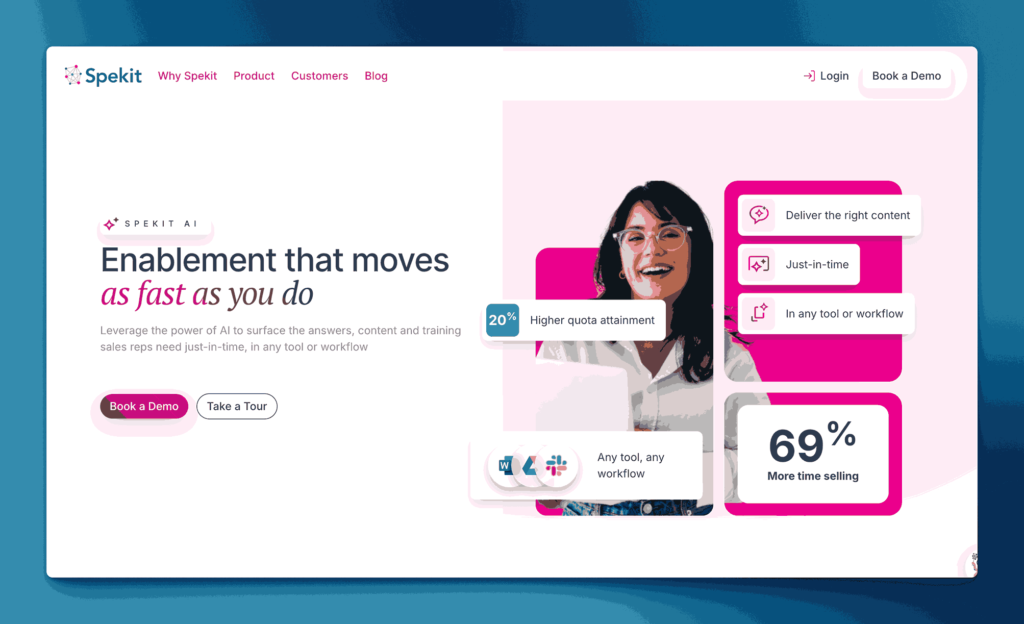
Spekit is a digital enablement and knowledge platform that integrates with popular tools like Salesforce, Slack, and Microsoft Teams. It provides context-sensitive help “speks” (bite-sized content) that appear when and where users need them.
Key information
- Open Source? No, Spekit is proprietary.
- Standalone KB Tool? Yes, though it focuses on in-app guidance rather than traditional wiki pages.
Why you might like it
- Contextual training: Delivers targeted knowledge within the apps your team already uses
- Real-time updates: Speks can be edited on the fly and instantly pushed to users
- Integrations: Seamlessly works with Salesforce, Slack, and more
- Analytics: Measure engagement and knowledge retention through usage metrics
Potential considerations
- Not a classic documentation repository—it’s more of an in-app help system
- Pricing scales with usage and the number of connected integrations. Pricing is also not available publicly
- May require user buy-in to adopt a new “speks” format
LivePro

LivePro is a knowledge management platform aimed at customer-facing teams, especially in contact centers. It focuses on delivering quick, consistent answers and tracking user engagement to continuously improve support content.
Key information
- Open Source? No, LivePro is proprietary.
- Standalone KB Tool? Yes, it’s a dedicated platform for knowledge management.
Why you might like it
- Decision trees and guided workflows for consistent agent responses
- User feedback integrated into articles for continuous improvement
- Multichannel support (web, phone, chat) so the same knowledge is accessible everywhere
- Analytics to track usage and uncover gaps in documentation
Potential considerations
- Primarily contact center focused—could be more than you need for simple internal docs
- Pricing typically fits enterprise or midsize businesses but pricing is not available publicly. Offer ‘Flex’, ‘Premium’ and enterprise plans though.
- Limited project collaboration features outside of the knowledge base context
BetterMode
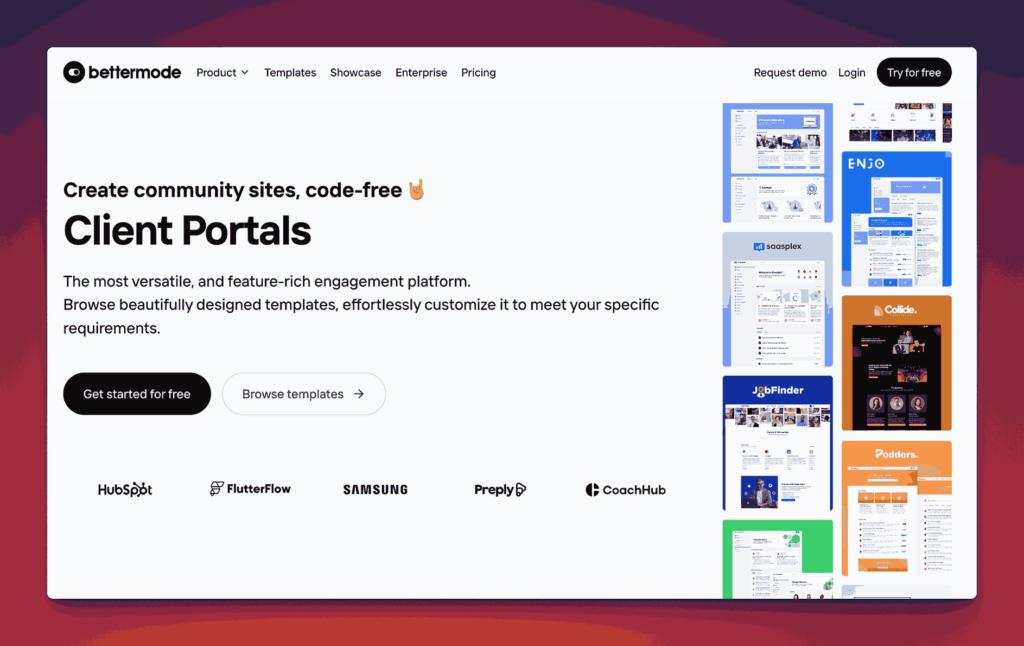
BetterMode (formerly “Tribe”) is a community platform that can also serve as a Q&A or discussion-based knowledge base. It supports community-driven knowledge creation where users can ask, answer, and organize information.
Key information
- Open Source? No, BetterMode is proprietary.
- Standalone KB Tool? Not purely—it’s a community platform with KB-like features (Q&A, discussions).
Why you might like it
- Community-driven content creation and curation
- Modular architecture allowing custom apps, widgets, and integrations
- Gamification with badges, points, and leaderboards for increased engagement
- Custom branding to align the community with your organization’s identity
Potential considerations
- Less structured for traditional documentation—primarily Q&A and forums
- Requires moderation to keep content organized and accurate
- Pricing is dependent on the number of ‘collaborators’. Between $19 to $99 per month for 3 to 10 collaborators respectively. Free plan and Enterprise plans available.
Mintlify
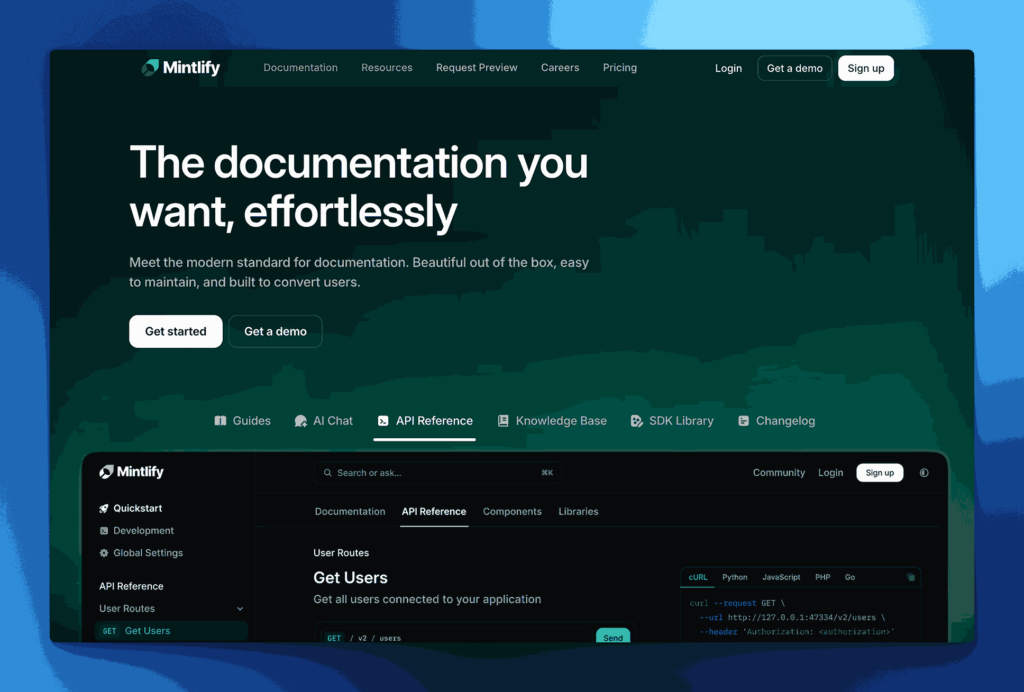
Mintlify is a documentation platform specifically aimed at developers. It provides a clean interface, code blocks, search, and integrations with popular tools, making it easy to write, deploy, and maintain technical documentation.
Key information
- Open Source? No, Mintlify is proprietary.
- Standalone KB Tool? Yes, it’s designed for developer-focused docs.
Why you might like it
- Developer-centric with syntax highlighting, code samples, and CLI tools
- Version control integration (e.g., GitHub) for workflow automation
- Responsive, modern templates suitable for API and software docs
- Search optimized for technical content
Potential considerations
- Narrow focus on developer documentation, not general wiki usage
- Limited advanced features like interactive tutorials or branching logic
- Pricing may become costly for large engineering teams. Pricing is dependent on the number of editors, offer two plans – $150 and $500 per month for 5 and 20 editors each. Has a free ‘Hobby’ plan and offers an Enterprisre plan.
HelpDocs
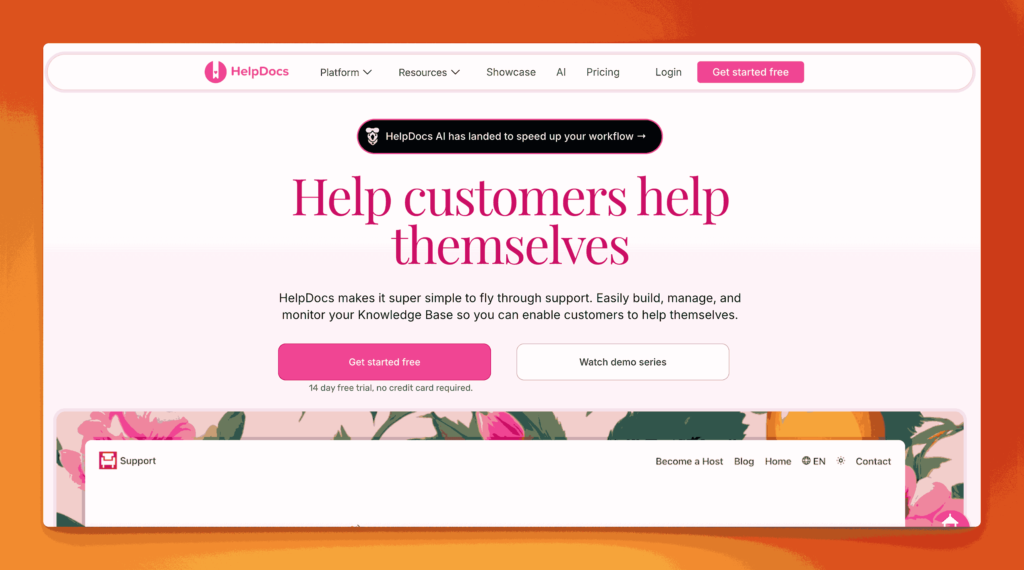
HelpDocs is a documentation platform designed for public help centers and internal wikis. It offers a clean, minimal interface with features like categories, tagging, and a powerful search function.
Key information
- Open Source? No, HelpDocs is proprietary.
- Standalone KB Tool? Yes, dedicated to building knowledge bases.
Why you might like it
- Instant deployment with customizable themes and domain mapping
- Category-based organization for intuitive navigation
- Analytics and feedback to understand how users interact with content
- Multilingual support for global audiences
Potential considerations
- Primarily text-based—less suited for complex internal processes or SOPs
- No built-in advanced workflow beyond basic publishing
- Pricing is $69, $139 and $279 per month. Discounts for paying annually upfront.
bit.ai
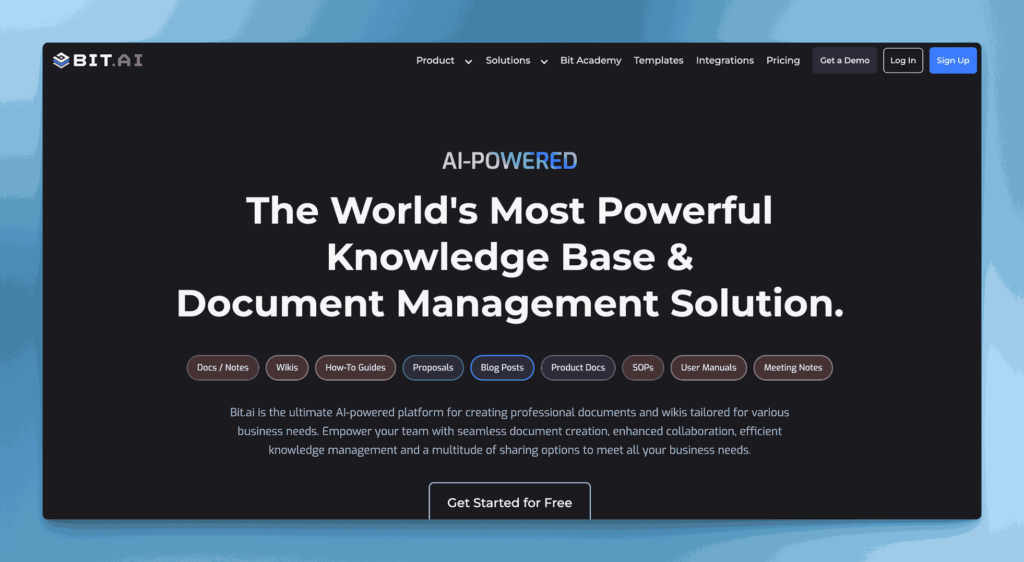
bit.ai is a modern document collaboration platform that can be used as a knowledge base. It supports rich media embedding, real-time editing, and organization via workspaces and folders.
Key information
- Open Source? No, bit.ai is proprietary.
- Standalone KB Tool? Yes, it can serve as a standalone knowledge base.
Why you might like it
- Embeds for videos, Google Docs, spreadsheets, and more
- Real-time collaboration with inline comments and mentions
- Smart workspaces to separate teams or projects
- Templates for quick creation of docs like project briefs, SOPs, etc.
Potential considerations
- Limited advanced features like version branching or complex approvals
- Pricing has a free plan, a Pro Plan and a Business Plan for $8 and $15 per member per month.
- Less suitable for large enterprises needing extensive customization
Read the Docs
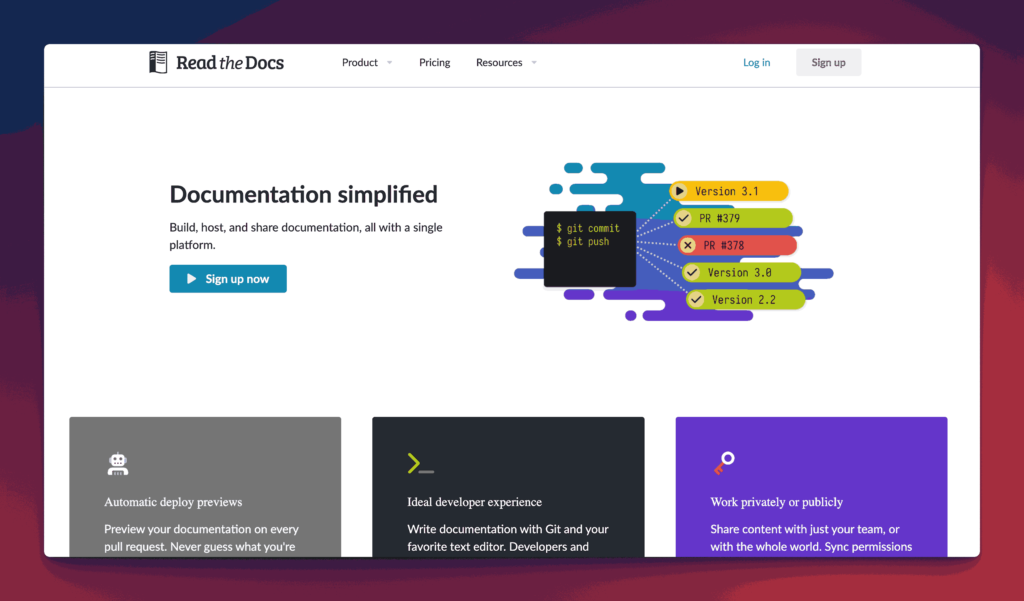
Read the Docs is a popular documentation hosting service, primarily used by open-source communities and developers. You can automatically build and host docs from a Git repository, making it ideal for code-related or developer-focused documentation.
It also has a great user community at Write The Docs
Key information
- Open Source? The hosting service is proprietary, but the underlying software (Sphinx) is open source.
- Standalone KB Tool? Yes, but specifically geared toward technical documentation.
Why you might like it
- Automated builds from GitHub, GitLab, or Bitbucket
- Versioning tied to your code branches
- Built using Sphinx/Markdown for powerful doc formatting
- Free hosting for open-source projects
Potential considerations
- Primarily developer-oriented rather than a general KB solution
- Less intuitive for non-technical users but highly feature rich
- Limited custom UI—the main style is the classic Sphinx doc theme
- Pricing – $150 per month for Advanced Plan and $250 per month for Pro Plan. Enterprise Plan available
Docusaurus
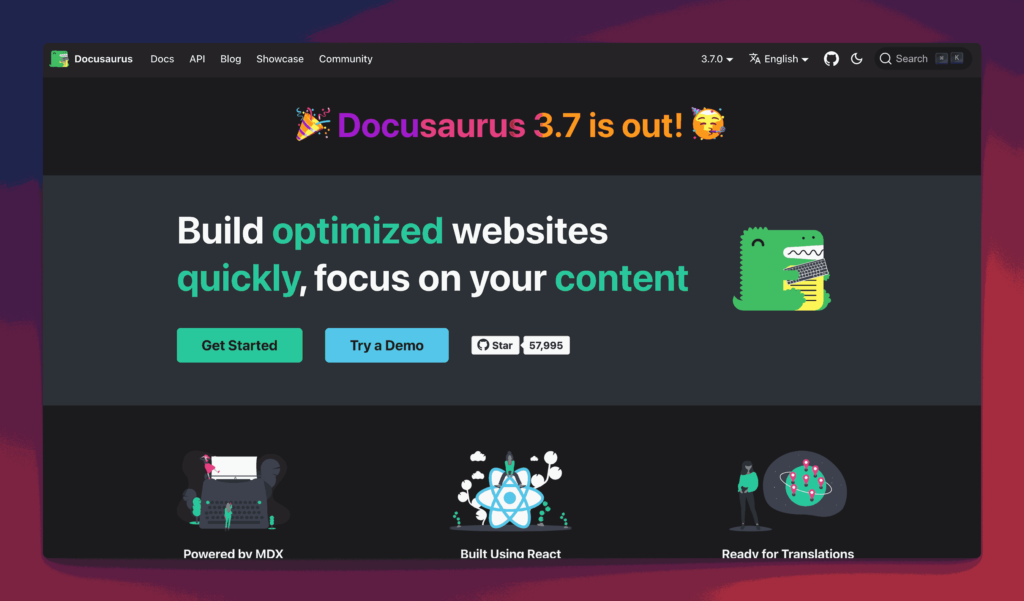
Docusaurus is an open-source static site generator focused on building documentation websites quickly. It offers Markdown-based doc creation, versioning, and a React-based theming system.
Key information
- Open Source? Yes, Docusaurus is open source. Uses a Creative Commons Attribution 4.0 license.
- Standalone KB Tool? Yes, but you need to host or deploy the generated site.
Why you might like it
- Markdown-based content creation for simplicity
- Versioning system that aligns with software releases
- React-based theming for customizable UI
- Large community and strong documentation
Potential considerations
- Requires some technical setup (Node.js, command-line tools)
- No built-in collaboration—docs are typically in a Git repo
- Focus on developer docs might not be as user-friendly for non-technical teams
MkDocs
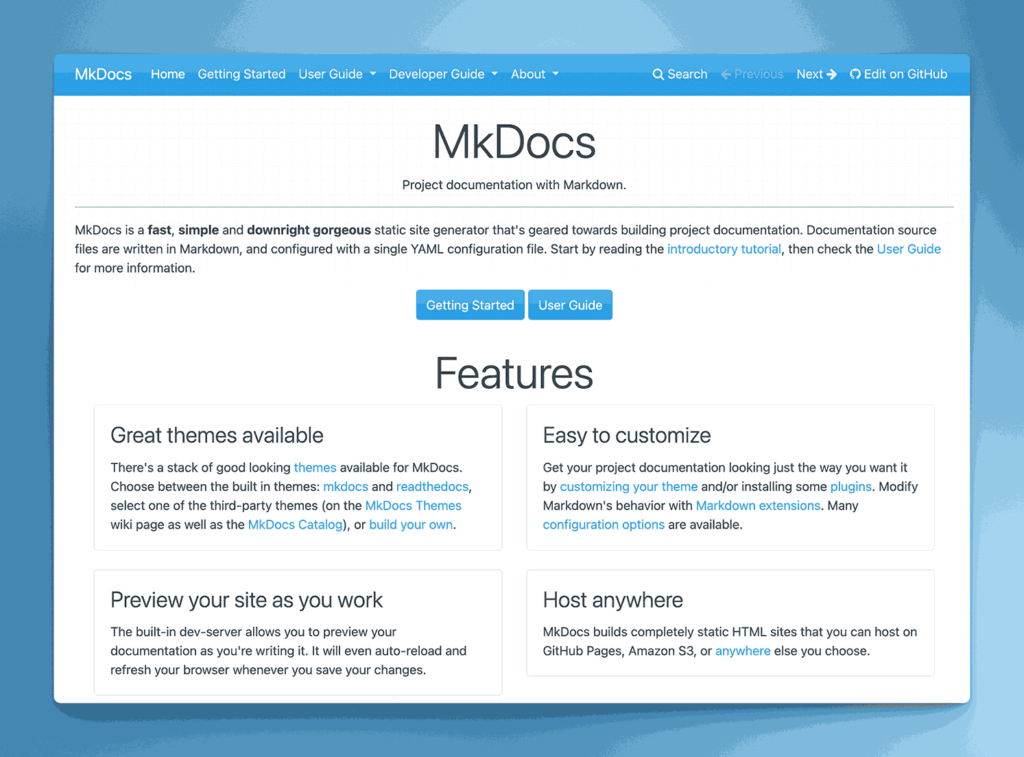
MkDocs is an open-source static site generator written in Python, designed for creating project documentation from Markdown. It’s known for simplicity and fast builds, with a range of custom themes available.
Key information
- Open Source? Yes, MkDocs is open source. Do read the license before you start using it though.
- Standalone KB Tool? Yes, you can build and host a KB site, but it’s static.
Why you might like it
- Markdown-based for quick, straightforward doc writing
- Fast, simple builds that generate lightweight static sites
- Theme support including the popular “Material for MkDocs”
- Git integration to track doc changes over time
Potential considerations
- Static site approach means no built-in database or dynamic editing features
- Requires technical setup (Python, CLI) to build and deploy
- Not ideal for large teams needing real-time collaboration or editorial workflows
KnowledgeBase.com
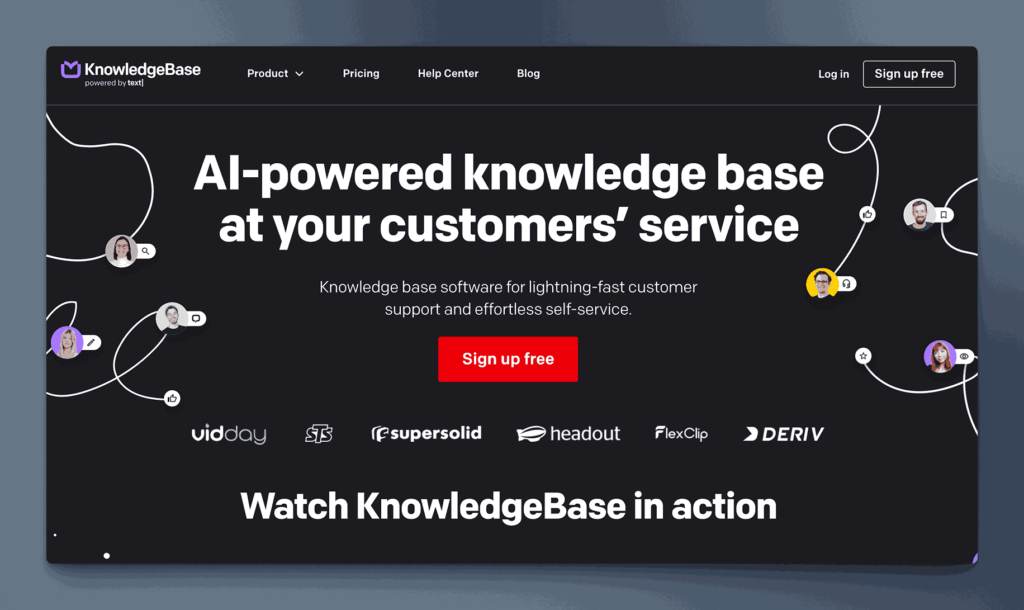
KnowledgeBase.com is a SaaS platform focused on delivering customer-facing help centers or internal wikis. It offers a simple editor, categorization, and analytics to measure article performance.
Key information
- Open Source? No, KnowledgeBase.com is proprietary.
- Standalone KB Tool? Yes, it’s built for knowledge base creation.
Why you might like it
- Easy to set up with minimal technical overhead
- Category management for organizing articles
- Built-in analytics to see popular content and search queries
- Customization for branding and domain usage
Potential considerations
- Limited advanced features like workflow automation or version control
- Pricing is simple. $49 per month when paid annually or $59 when paid monthly.
- Less suitable for large enterprises with complex documentation needs
Doctave
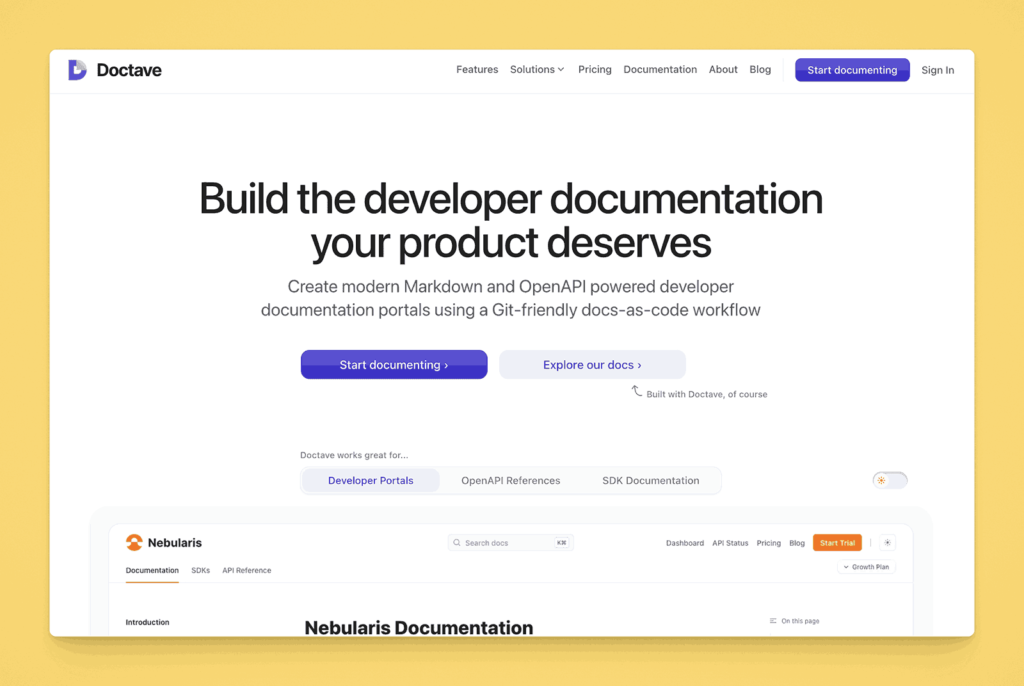
Doctave is a documentation platform that integrates with Git. It’s designed to help teams write, review, and publish technical docs, offering automated builds, search, and a user-friendly interface over a Git repo.
Key information
- Open Source? No, Doctave is proprietary
- Standalone KB Tool? Yes, it’s primarily for creating and hosting docs or KB content.
Why you might like it
- Git-based workflow for version control and collaboration
- Automatic builds and hosting for docs with minimal setup
- Search and organization features that scale with your repo
- Clean, minimal design focusing on readability
Potential considerations
- Technical knowledge needed to manage Git-based doc pipelines
- Limited non-technical user features for editing or WYSIWYG formatting
- Pricing might grow with team size or advanced usage with a wide variance – $99, $399 and $1000 per month.
Glean
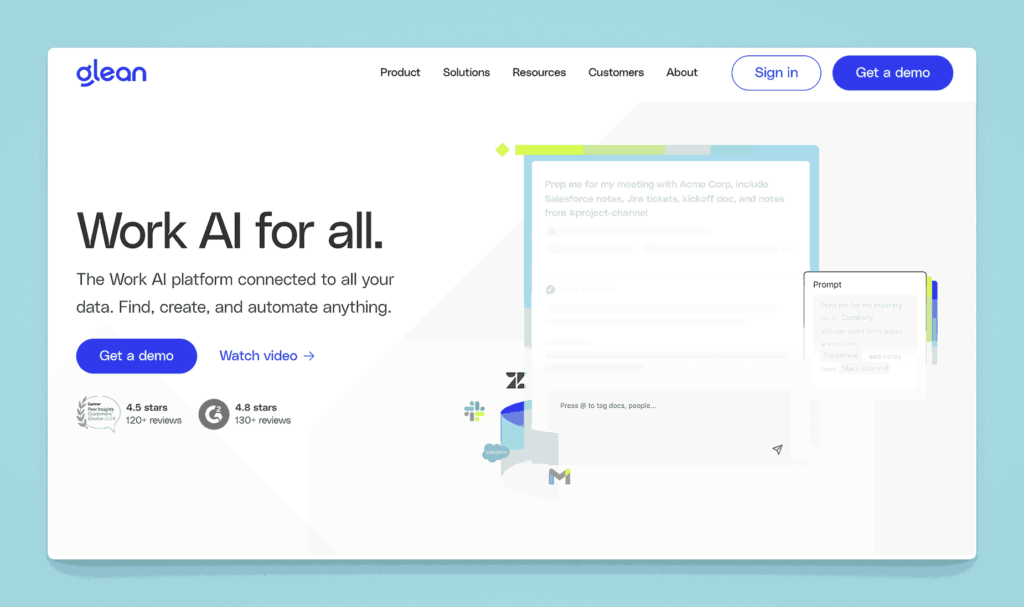
Glean is an AI-powered workplace search and knowledge management platform. It connects to multiple apps (Google Workspace, Slack, Confluence, etc.) and unifies them under a single search interface, helping users quickly find relevant information.
Key information
- Open Source? No, Glean is proprietary.
- Standalone KB Tool? Not exactly—it’s more of a unified search and knowledge discovery layer.
Why you might like it
- Universal search across various third-party services
- AI-driven recommendations surface relevant content proactively
- User-friendly interface that consolidates scattered info
- Administration controls for access and permissions
Potential considerations
- Not a content-creation tool—relies on existing docs from integrated sources
- Pricing not public
- Requires robust integrations for maximum effectiveness
Atlas (by ClearPeople)

Atlas is a digital workspace and knowledge management platform built on Microsoft 365. It enhances SharePoint functionalities with additional features for content governance, collaboration, and enterprise search.
Key information
- Open Source? No, Atlas is proprietary.
- Standalone KB Tool? Not purely—it’s an add-on/overlay for Microsoft 365 and SharePoint.
Why you might like it
- Extended SharePoint capabilities for advanced knowledge management
- Easy to navigate project workspaces and organizational resources
- Integrated with Microsoft 365 for seamless authentication and file handling
- Governance and compliance features that exceed out-of-the-box SharePoint
Potential considerations
- Requires Microsoft 365 & SharePoint environment already in place
- Enterprise-level pricing may be overkill for smaller teams. Starts at $2500 per month
- Complex setup that might need partner or consultant support
Axero Solutions
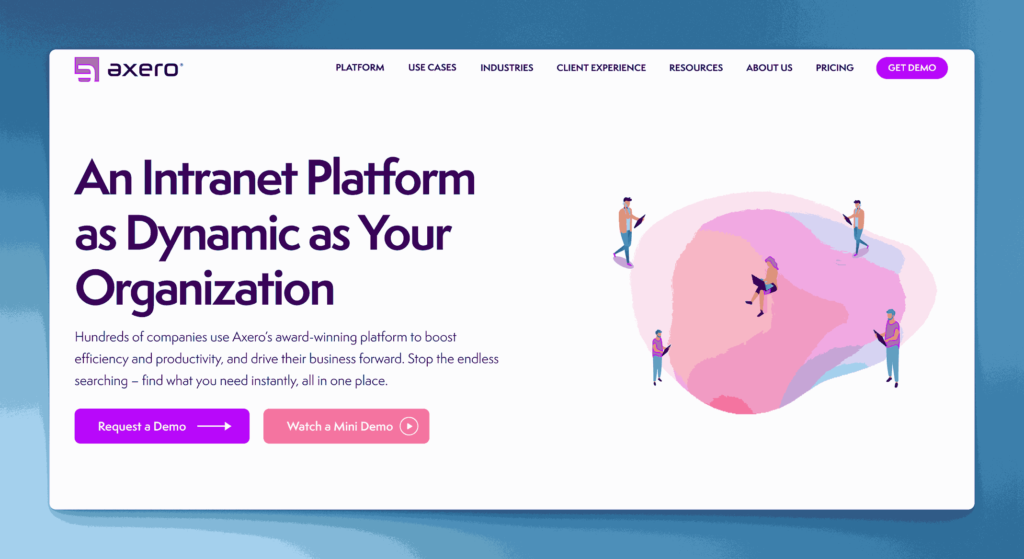
Axero Solutions offers a platform called “Communifire,” which is an intranet and collaboration suite that includes knowledge base functionality. It aims to unify company news, documents, discussions, and Q&A into a central hub.
Key information
- Open Source? No, Axero is proprietary.
- Standalone KB Tool? Part of a broader intranet suite, but can be used for KB purposes.
Why you might like it
- Intranet + KB combination for holistic internal communications
- Built-in collaboration features like blogs, wikis, forums, and Q&A
- Permissions and content moderation for secure, organized sharing
- Branding and design customization to match corporate identity
Potential considerations
- Might be too extensive if you only need a basic wiki
- Higher-tier pricing for enterprise features but not public.
- Learning curve for administrators and end users
TWiki
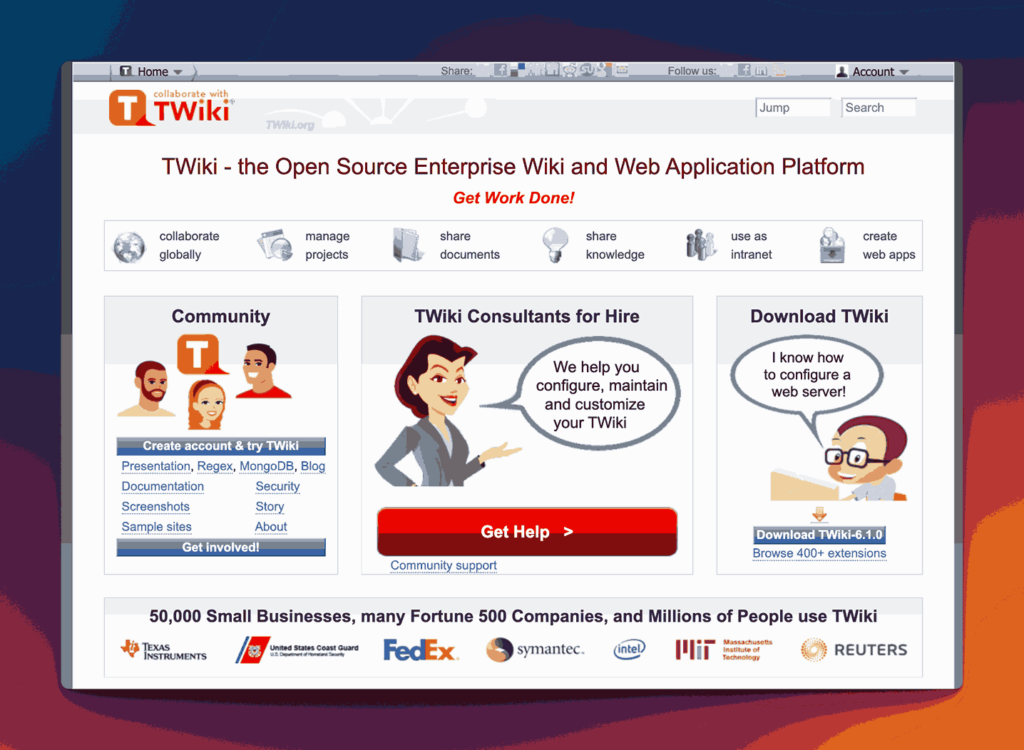
TWiki is a structured wiki application written in Perl, designed for enterprise collaboration. It has strong plugin support, user access controls, and a flexible framework for building custom wiki applications.
Key information
- Open Source? Yes, TWiki is open source. Uses as GNU GPLv3 License.
- Standalone KB Tool? Yes, it functions as a self-hosted wiki solution.
Why you might like it
- Structured data approach allows for form-based pages and custom fields
- Extensible plugin ecosystem to add features
- Fine-grained access control for enterprise security needs
- Proven track record used by organizations for many years
Potential considerations
- Perl-based—less common environment compared to PHP or Node
- Older UI might feel dated without customization
- Setup can be complex, requiring command-line and server knowledge
Why AllyMatter: Comprehensive knowledge management without compromise
Part 4 showcases the breadth of specialized solutions available – from developer-focused platforms like Mintlify to enterprise ITSM tools like BMC Helix, each excelling in specific domains but often requiring organizations to choose between specialized features and broad usability. Many teams find themselves managing multiple tools or accepting significant limitations to meet diverse documentation needs.
AllyMatter bridges these specialized requirements within a unified platform. Whether you need the structured workflows of enterprise solutions, the technical documentation capabilities of developer tools, or the compliance features of specialized platforms, our comprehensive approach eliminates the need to choose between different specialized solutions. This unified capability ensures all departments can effectively manage their knowledge within a single, cohesive system.
Interested to know more? Click here to read part 5 of this series.
Frequently asked questions
How do enterprise pricing models like BMC Helix compare to simple per-user plans?
Enterprise solutions often use complex pricing based on modules, integrations, and support levels, potentially costing thousands monthly. Simple per-user models offer predictable costs but may lack enterprise features. Calculate total cost including implementation, training, and ongoing support when comparing enterprise versus straightforward pricing models.
What makes developer-focused tools like Mintlify worth their premium pricing?
Developer documentation platforms provide specialized features like syntax highlighting, code examples, and GitHub integration that general knowledge bases lack. This specialization justifies higher costs for technical teams but represents overpayment for general documentation needs. Match tool specialization to your primary content types.
Are document authoring tools like MadCap Flare cost-effective for knowledge bases?
Professional authoring tools excel at producing polished, multi-format documentation but require significant licensing and training investment. They work well for teams producing customer-facing documentation or complex technical manuals but may be overkill for internal knowledge sharing. Consider simpler alternatives unless you need professional publishing capabilities.
How do I evaluate ROI for specialized platforms like IT Glue versus general solutions?
Specialized platforms like IT Glue provide industry-specific features that can dramatically improve efficiency for their target users but offer little value outside those scenarios. Calculate ROI based on time saved on industry-specific tasks versus the premium cost compared to general platforms that might meet most needs.
What hidden costs should I watch for in enterprise solutions like Atlas?
Enterprise platforms often require additional licensing for Microsoft 365, consultant fees for implementation, and ongoing support contracts. These costs can double or triple the apparent platform price. Factor in total ownership costs including training, customization, and maintenance when evaluating enterprise solutions.
